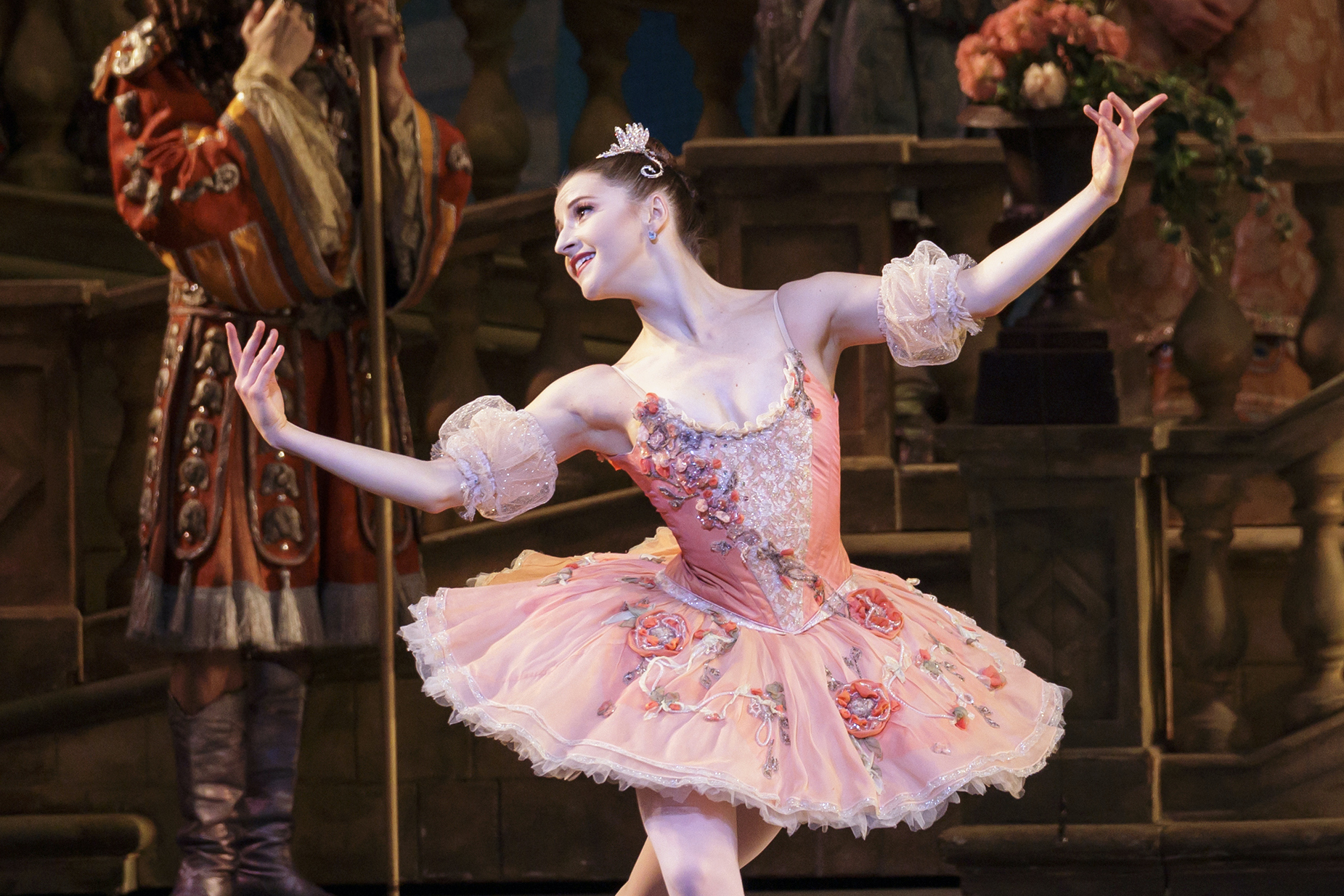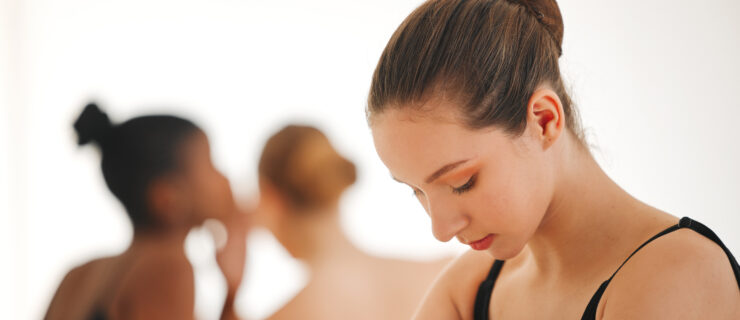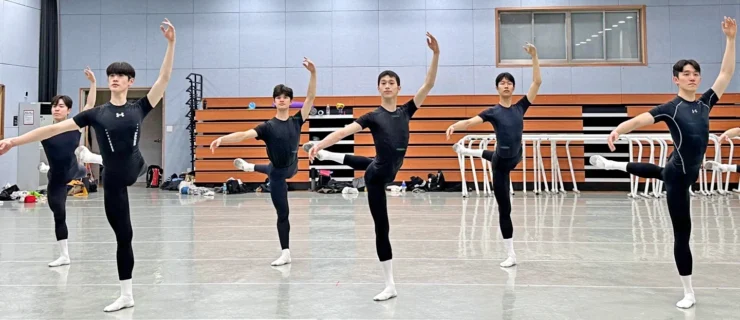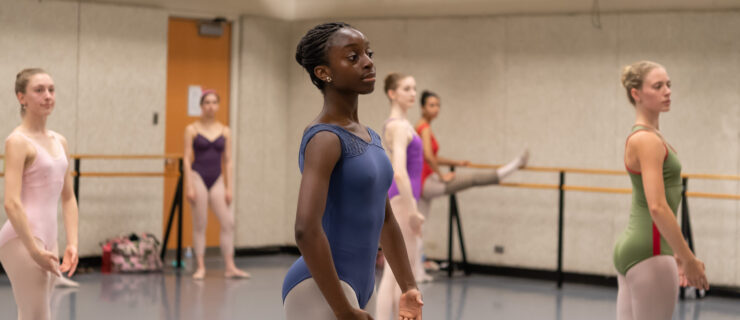How to Develop Authentic Onstage Facial Expressions
New York City Ballet principal Indiana Woodward remembers feeling equal parts nervous and excited during her dress rehearsal as Aurora in The Sleeping Beauty this past winter season. It’s a challenging role, and when she began the sequence of attitude promenades and balances in Act I’s “Rose Adagio,” the tension on her face was evident. “ ‘I’ve never seen anything like it,’ ” Woodward says her longtime dance partner, Harrison Ball, told her through fits of laughter afterward. “ ‘Your whole mouth and cheeks were quivering as if a fan was blowing right on your face!’ ” Woodward had no idea that the excited energy she was feeling was translating into complete facial vibrations. “I was so focused on balancing, I didn’t even think about what my face was doing,” she says.
Her story serves as a reminder that every dancer (including a principal like Woodward, who is particularly known for her stage presence) needs to be conscious of their face onstage. Facial expressions can bring authenticity and magnetism to an artist’s performance, but we don’t always get it right—whether it’s raising our eyebrows overeagerly (particularly common in young dancers), staring the audience down, plastering on a megawatt smile, or simply not using our faces at all. How can dancers find a natural expression that’s appropriate to what they’re performing? We caught up with three experts to find out.
What Facial Expressions Bring to Your Dancing
Just as technical prowess is essential to the success of a ballet dancer, so too is stage presence and expression. In fact, Slawomir Wozniak, director and founder of Master Ballet Academy in Scottsdale, Arizona, argues that it’s 50 percent of what brings audiences back to the theater. During his time as a dancer with the Polish National Ballet, he sought to show audiences the purpose behind the choreography beyond just the movement. “I used my face to express the emotions of that story.” Now, as an educator, Wozniak stresses the importance of expression to his students. “It’s difficult to do six minutes of nonstop dancing while keeping your face happy, but this is part of the game,” he says.
Finding Authenticity and Relating to Your Fellow Dancers Onstage
Recognizing the importance of facial expressions is one thing; knowing how to implement them is another. For Woodward, it all comes down to her genuine, internal experience. “I dive deep into the story of whatever role I am doing, and strive to embody that person’s experience,” she says. “I work to be present and feel whatever it is the character is feeling. Then whatever expression comes onto my face is honest rather than contrived.” Woodward says she has embraced this philosophy after watching both authentic and forced performances. “You can see when someone is pulling an expression because they feel like their face looks best in that position, and it takes away the magic,” she says.
If you’re performing work from a narrative ballet, Wozniak recommends studying the story and watching past performers embody the role. “If you’re doing Swan Lake, read up on why the White Swan does what she does, and why Odile behaves differently,” he suggests. “Watch other dancers to see how their expressions differ between the two.” Beyond that, Wozniak believes the base of a dancer’s ability to express onstage comes from how comfortable they are expressing themselves in real life. “Some of it comes down to personality, but good social skills will help you express naturally onstage without pretending,” he says.
Additionally, San Francisco Ballet rehearsal director Tina LeBlanc says it’s important for dancers to remember to focus their eyes. Early in LeBlanc’s career, she remembers, a reviewer said something to the effect of “Tina is a dancer to be watched. I look forward to a time when she relates to her partner.” It was a comment that stuck with her. “It was a jolt to my system,” LeBlanc says. She learned she needed to focus more on her partner and other dancers onstage, to connect with them as well as with the audience. Now, directing the eyes is something she emphasizes when teaching and coaching. “If you do a first arabesque and, out of habit, your eye moves slightly forward to where the mirror would be rather than over your nose, the effect is broken,” she says. “Focus is crucial.”
What If You’re Not Embodying a Character?
Sure, all of this advice is great when you’re approaching a role, but what do you need to consider when doing abstract ballets with no character to pull from? For LeBlanc, it comes down to the music. “Is the music bright?” she asks. “Do you feel joyous when you hear it? Then allow that feeling to spread across your face.” For something like George Balanchine’s Agon, in which smiling doesn’t fit, but a monotonous expression isn’t quite right either, LeBlanc advises reaching for the essence of the work. “You could be regal, or forthright, or strong,” she says. “Each of those things will bring out a slightly different expression on your face.” If you’re unsure, LeBlanc recommends asking a teacher or rehearsal director for their opinion.

Practice, Practice, Practice
As with most things, LeBlanc recommends that young dancers be aware of their expression in class, keeping it relaxed and pleasant. “Class is a great place to be aware of what your face is doing,” she says. “For example, adagio is the perfect time to really let your emotions come out. Look at your face and notice how those feelings impact your expression.” While you assess your expressions in the mirror, be sure to check that you’re not overdoing the eyebrows (raising them eagerly or furrowing them dramatically) or pursing your lips. “Remember that your mouth should have range of motion as well,” LeBlanc says. “If it stays set in the same position, your performance will look monotone.”
The dancers at Master Ballet Academy are expected to always practice their variations with expression. “Not only in rehearsal, but at home in front of their mirrors, as well,” Wozniak says. You might also consider asking a friend, coach, or director to watch your face while you dance, to see if you’re portraying what you’ve intended to. Either way, it’s a skill worth investing your time into. “Facial expressions allow you to captivate the audience and create a relationship with them,” Woodward says. “It is their window into the story of the ballet.”






